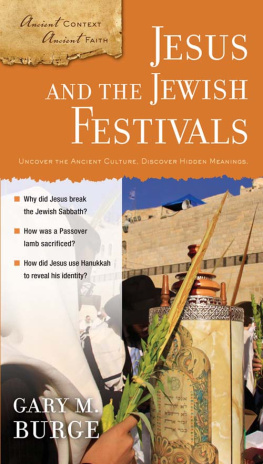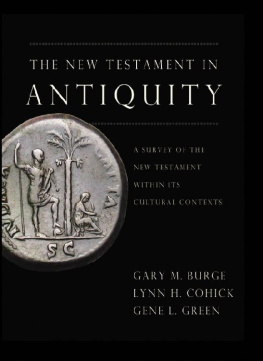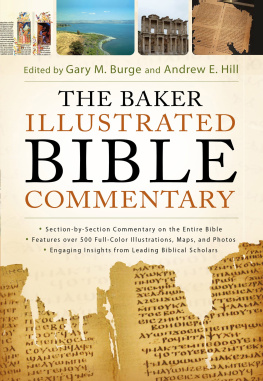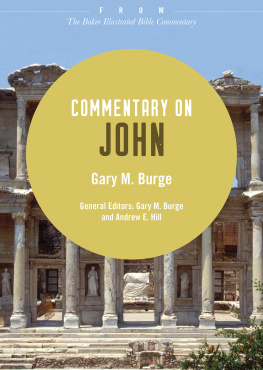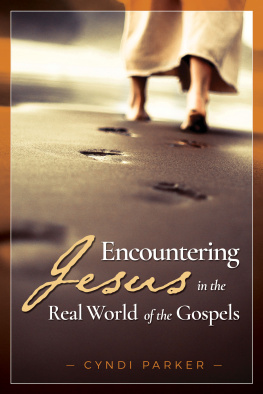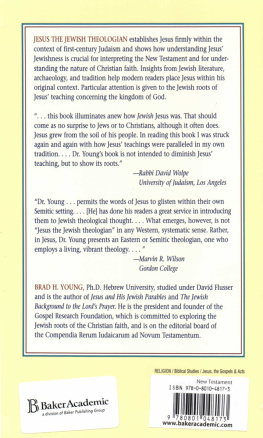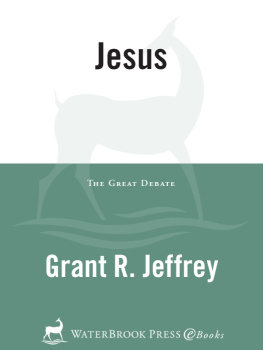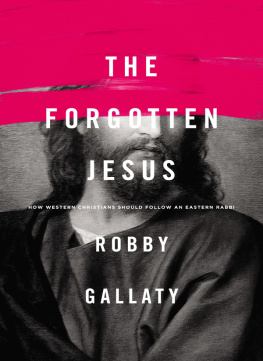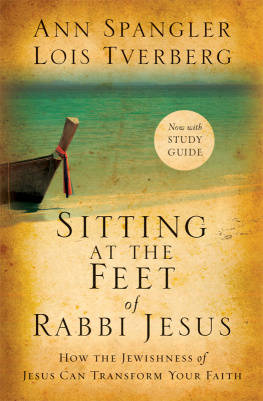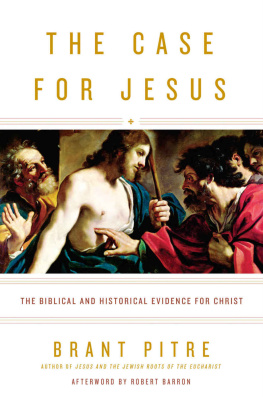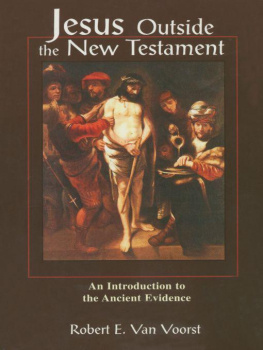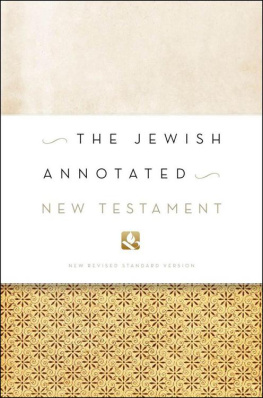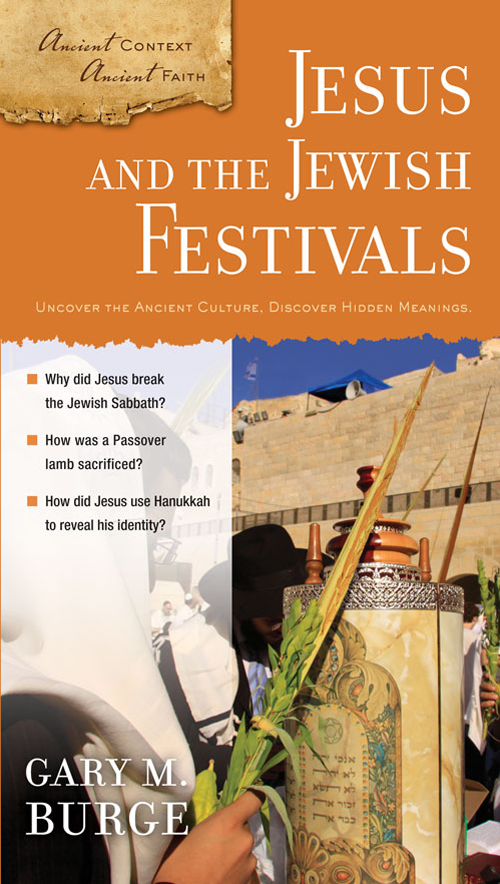U NCOVER THE A NCIENT C ULTURE , D ISCOVER H IDDEN M EANINGS .
GARY M. BURGE
Series Introduction
A NCIENT C ONTEXT, A NCIENT F AITH
EVERY COMMUNITY of Christians throughout history has framed its understanding of spiritual life within the context of its own culture. Byzantine Christians living in the fifth century and Puritan Christians living over a thousand years later used the world in which they lived to work out the principles of Christian faith, life, and identity. The reflex to build house churches, monastic communities, medieval cathedrals, steeple-graced village-centered churches, or auditoriums with theater seating will always spring from the dominant cultural forces around us.
Even the way we understand faith in Christ to some degree is shaped by these cultural forces. For instance, in the last three hundred years, Western Christians have abandoned seeing faith as a chiefly communal exercise (although this is not true in Africa or Asia). Among the many endowments of the European Enlightenment, individualism reigns supreme: Christian faith is a personal, private endeavor. We prefer to say, I have accepted Christ, rather than define ourselves through a community that follows Christ. Likewise (again, thanks to the Enlightenment), we have elevated rationalism as a premier value. Among many Christians faith is a construct of the mind, an effort at knowledge gained through study, an assent to a set of theological propositions. Sometimes even knowing what you believe trumps belief itself.
To be sure, many Christians today are challenging these Enlightenment assumptions and are seeking to chart a new path. Nevertheless the new path charted is as much a byproduct of modern cultural trends as any other. For example, we live today in a highly therapeutic society. Even if we are unaware of the discipline of psychology, we are still being shaped by values it has brought to our culture over the last hundred years. Faith today has an emotional, feeling-centered basis. Worship is measured by the emotive responses and the heart. Felt needs of a congregation shape many sermons.
Therefore, defining Christian faith as a personal choice based on well-informed convictions and inspired by emotionally engaging worship is a formula for spiritual formation that may be natural to us but it may have elements that are foreign to the experience of other Christians in other cultures or other centuries. I imagine that fifth-century Christians would feel utterly lost in a modern church with its worship band and theater seating where lighting, sound, refreshments, and visual media are closely monitored. They might wonder if this modern church was chiefly indebted to entertainment, like a tamed, baptized version of Romes public arenas. They might also wonder how 10,000 people can gain any sense of shared life or community when each family comes and goes by car, lives long distances away, and barely recognizes the person sitting next to them.
T HE A NCIENT L ANDSCAPE
If it is true that every culture provides a framework in which the spiritual life is understood, the same must be said about the ancient world. The setting of Jesus and Paul in the Roman Empire was likewise shaped by cultural forces quite different than our own. If we fail to understand these cultural forces, we will fail to understand many of the things Jesus and Paul taught.
This does not mean that the culture of the biblical world enjoys some sort of divine approval or endorsement. We do not need to imitate the biblical world in order to live a more biblical life. This was a culture that had its own preferences for dress, speech, diet, music, intellectual thought, religious expression, and personal identity. And their cultural values were no more significant than are our own. Modesty in antiquity was expressed in a way we may not understand. The arrangement of marriage partners would be foreign to our world of personal dating. Even how one prays (seated or standing, arms upraised or folded, aloud or silent) has norms dictated by culture.
But if this is true if cultural values are presupposed within every faithful community, both now and two thousand years agothen the stories we read in the Bible may presuppose themes that are completely obscure to us. Moreover, when we read the Bible, we may misrepresent its message because we simply do not understand the cultural instincts of the first century. We live two thousand years distant; we live in the West and the ancient middle East is not native territory for us.
I NTERPRETING FROM A FAR
This means we need to be cautious interpreters of the Bible. We need to be careful lest we presuppose that our cultural instincts are the same as those represented in the Bible. We need to be culturally aware of our own place in time and we need to work to comprehend the cultural context of the Scriptures that we wish to understand. Too often interpreters have lacked cultural awareness when reading the Scriptures. We have failed to recognize the gulf that exists between who we are today and the context of the Bible. We have forgotten that we read the Bible as foreigners, as visitors who have traveled not only to a new geography but a new century. We are literary tourists who are deeply in need of a guide.
The goal of this series is to be such a guideto explore themes from the biblical world that are often misunderstood. In what sense, for instance, did the physical geography of Israel shape its peoples sense of spirituality? How did the storytelling of Jesus presuppose cultural themes now lost to us? What celebrations did Jesus know intimately (such as a childs birth, a wedding, or a burial)? What agricultural or religious festivals did he attend? How did he use common images of labor or village life or social hierarchy when he taught? Did he use humor or allude to politics? In many casesjust as in our worldthe more delicate matters are handled indirectly and it takes expert guidance to revisit their correct meaning.
In a word, this series employs cultural anthropology, archaeology, and contextual backgrounds to open up new vistas for the Christian reader. If the average reader suddenly sees a story or an idea in a new way, if a familiar passage is suddenly opened for new meaning and application, this effort has succeeded.
I am indebted to many experiences and people who awakened my sense of urgency about this interpretive method. My first encounter came as a student at Beiruts Near East School of Theology in the 1970s. Since then scholars such as David Daube, J. D. M. Derrett, S. Safrai, M. Stern, E. P. Sanders, Charles Kraft, James Strange, Kenneth Bailey, Bruce Malina, I. Howard Marshall, and a host of others have contributed to how I read the New Testament. Baileys many books in particular as well as his long friendship have been prominent in inspiring my efforts into the cultural anthropology of the ancient world. In addition I have been welcomed many times by the Arabic-speaking church in Lebanon, Syria, Iraq, Jordan, Palestine, and Egypt and there became attuned to the way that cultural setting influences how we read texts. To them and their great and historic faith, I owe a considerable debt.

